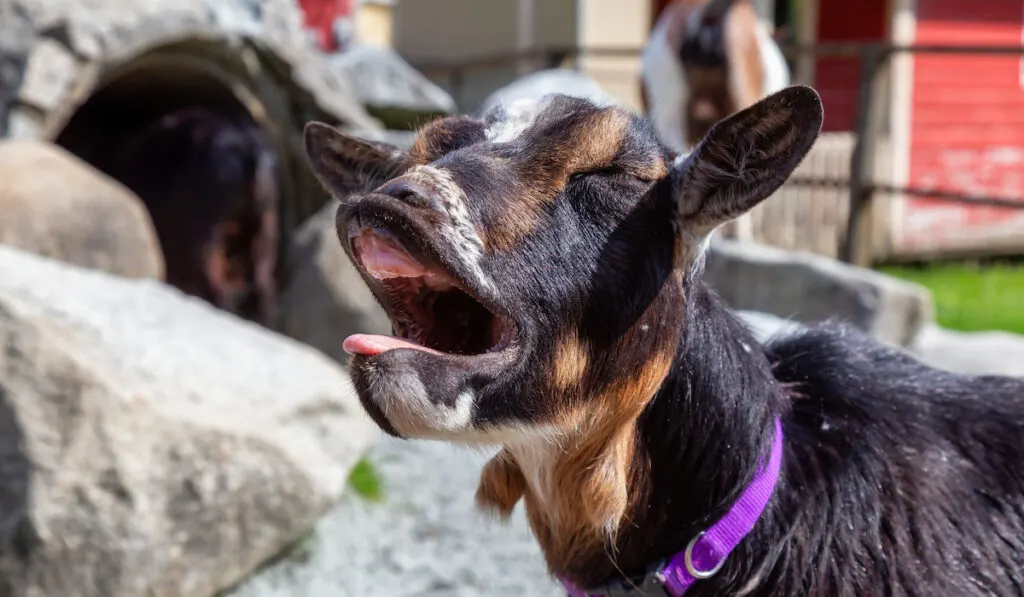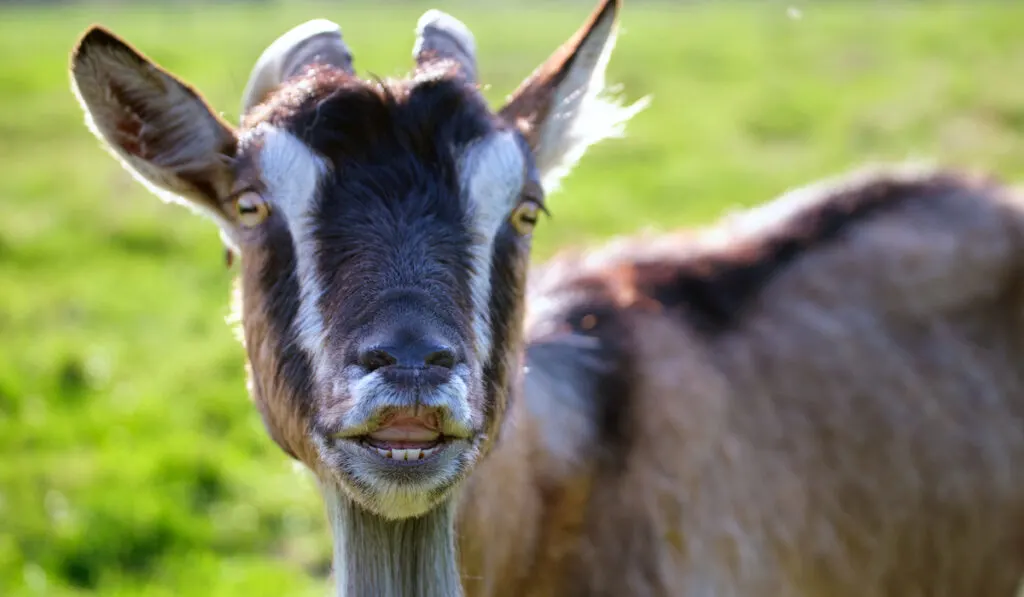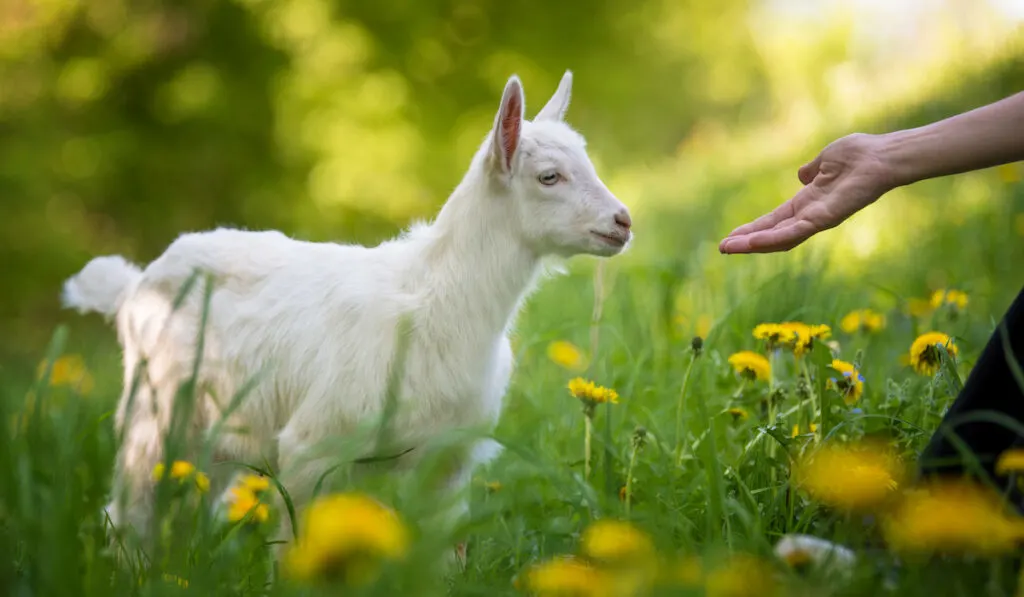Most animals with teeth have both upper and lower sets. After all, the symmetry of dental work lets us bite and chew. But what about the goat? Though they have teeth, are they on both the top and the bottom of the mouth as well? You’ve probably noticed you only see a goat’s bottom teeth, so do they have teeth on the top too?
Surprisingly, goats do not have teeth in the front of the top of their mouths – only the lower jaw is lined with teeth. Where they do possess teeth on their upper jaw though, is as a line of molars that mirror their lower set. That imbalance doesn’t hold them back, though, as they are certainly eating machines!
Table of Contents
Why Don’t Goats Have Top Teeth?
Simply put, they do not really need them! Two rows of tearing teeth really aren’t necessary for the typical goat diet, and they have evolved to eat successfully without them.
Their sets of molars in the back allow them to chew. (source) The lack of front top teeth is not a problem for these herbivores, more specifically known as ruminants (grazing animals).
Since goats don’t eat meat, they don’t need the sharp teeth of carnivores. They use their lower front teeth to tear off roughage when they forage, but a second set of teeth is not needed to help them crop grasses and other plants.

Further, ruminants have a four-chambered stomach. This means they have the ability to regurgitate their swallowed food as cud (a paste-like portion of regurgitated, not fully digested food) and chew it again. (source)
This allows them to not only chew it down to a more easily digestible pulp, but also to extract the most nutrients possible from the food.
What’s interesting, though, is that the lack of top incisors has occurred as a process of evolution, as their early ruminant ancestors did have those top teeth.
Scientists speculate that this development is due to a combination of eating lush grasses and chewing cud, so top teeth became unnecessary.
Also, most ruminants use their tongues to eat and grab food, making top incisors unnecessary – and even a risk to injuring the tongue.
How Goats Eat Without Top Teeth
While a goat’s upper jaw may not have rows of teeth, they instead have a special, tough kind of pad that allows them tear off their food. This is called a dental pad. (source)
Goats use their lower incisors in combination with that dental pad – or their tongues – to find and tear off food, Then they use their matching sets of back molars to grind it up.

To ensure they get maximum nutrition and full digestion of their food, goats utilize cud. The once-chewed and then regurgitated food is able to be chewed again, extracting as much nutritional value as possible and allowing for smoother, easy digestion.
How Many Teeth Do Goats Have?
Even with most of their teeth being located on their lower jaw, goats still have an impressive amount of teeth. They have a total of 32 teeth – eight incisor teeth they use to grab and bite off leaves and branches, and then 24 molars that they use to grind up their food before swallowing it.
Do Goats Loose Teeth?
Goats do lose teeth, much like humans. They lose baby teeth to make way for adult teeth, and they lose teeth to old age and wear and tear.
In fact, you can use those eight lower teeth to tell the age of a goat. (source) Of course, every goat is different – some may not lose every young tooth, some may lose them later, but the general pattern is the same.
For the first year of a kid’s life, they have small, sharp incisors. These will gradually fall out and be replaced by their permanent and larger incisor teeth.

By 12 months old, most goats will lose their two middle front teeth, to be filled in by larger, permanent teeth.
By 24 months, the teeth immediately next to those middle ones will fall out and be replaced. By four years old, they should have six full, permanent incisors, with a single pair of baby incisors left.
By the time they reach five years old, all eight lower incisors should be their permanent, adult teeth. From this point on, their teeth are subject to being worn and ground down by eating and age.
Goats who eat a lot of coarse, rough foods will wear down their teeth at a faster rate than a goat on a softer diet. As the goat ages, those teeth grind away, spread out and even loosen, with many falling out entirely as the goat grows older.
Can Goats Bite?
Goats do show irritation – but not aggression – by biting, so don’t get too complacent around goats! While a chomp by a goat won’t do serious harm, having your finger squashed between the lower incisors and that top dental pad will still hurt!

Of course, too, if you stick your finger too far back in their mouths, you run the risk of getting bitten between the two sets of molars.
Often, a bite is more a curiosity nibble. Goats use their mouths much like we use our hands; to explore the world around them and interact with physical objects.
Goats are fascinating creatures with an interesting digestive system. Though they do not possess top teeth in the front, they have a complex system of eating that has allowed them to evolve to take in more nutrients. Don’t fear a goat’s bites either, but be careful of their nips to avoid an accidental pinch.
